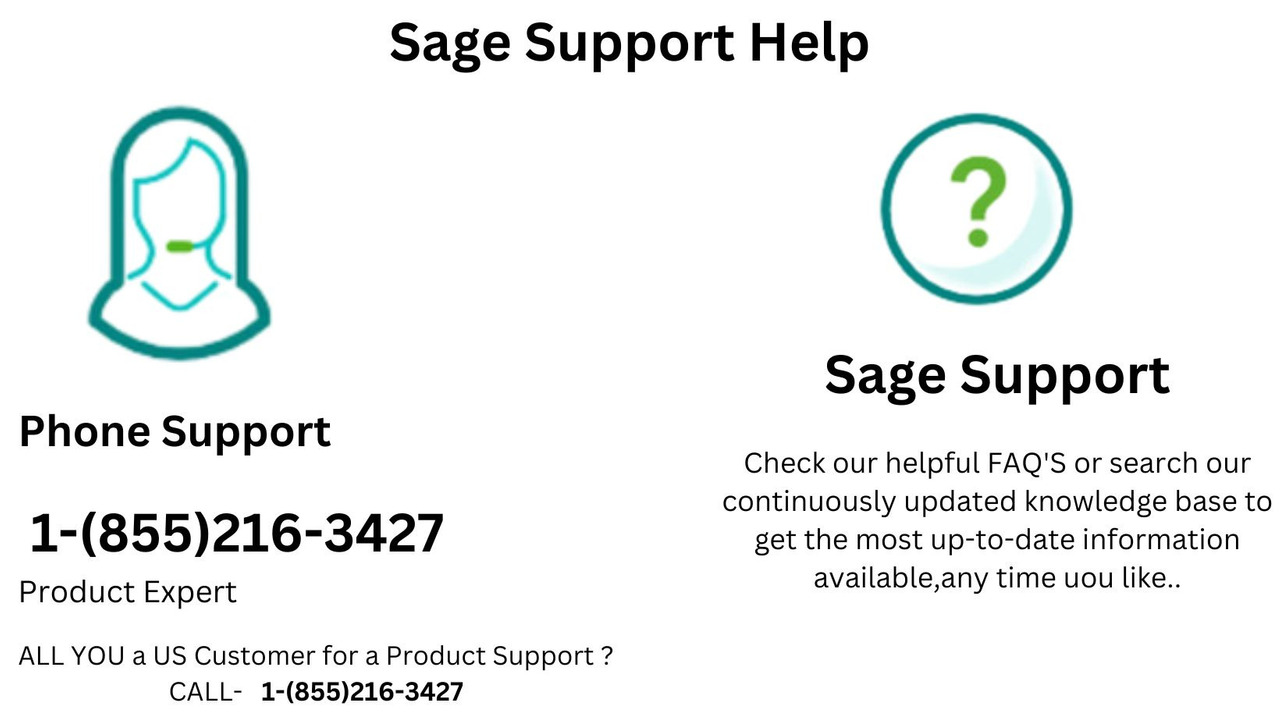Sage 50 is a widely-used accounting software that offers a comprehensive suite of tools to manage financials, inventory, and other business processes. However, as businesses grow and their needs become more complex, Sage 50 users often require additional functionality. This is where third-party integrations come in—providing users with the ability to enhance the software's capabilities by connecting it with other essential business tools. Understanding how Sage 50 integrations work and how they can benefit your business is key to optimizing your workflow and improving efficiency.
Want to Integrate Sage 50 without any problem, call at 1-855-216-3427
What Are Sage 50 Integrations?
Sage 50 integrations are the process of connecting Sage 50 with third-party applications or software systems to expand its functionality. These integrations allow Sage 50 users to seamlessly sync data between various tools, automating tasks and ensuring that all systems within a business are working in harmony. Whether it's for CRM systems, eCommerce platforms, or payroll software, Sage 50 integrations enable businesses to consolidate their operations and streamline workflows.

Benefits of Sage 50 Integrations
Improved Efficiency and Automation
Integrating Sage 50 with other tools helps automate repetitive tasks. For example, syncing customer orders from an eCommerce platform directly into Sage 50’s accounting system eliminates the need for manual data entry. Automating processes like invoicing, payroll, and inventory management saves time and reduces the risk of errors, allowing employees to focus on higher-value activities.
Enhanced Data Accuracy
Manual data entry is prone to errors, which can lead to discrepancies in financial records. With Sage 50 integrations, data flows seamlessly between platforms, ensuring that your business has accurate, real-time information. This reduces the likelihood of human error and ensures that your accounting data is always up to date.
Better Decision-Making
Integrating Sage 50 with business intelligence (BI) tools and analytics platforms can provide deeper insights into your company’s financial performance. By consolidating data from multiple sources, you gain a comprehensive view of your operations, which helps you make informed decisions. This data-driven approach can help you identify trends, forecast future financial performance, and optimize business strategies.
Customizable Solutions for Specific Needs
Sage 50 is a flexible accounting software, and when integrated with third-party tools, it can be customized to meet the specific needs of your business. Whether you're looking to integrate with a CRM, project management software, or a custom inventory system, you can create a tailored solution that works for your unique requirements. This flexibility helps businesses grow without being constrained by the limitations of their accounting software.

Common Sage 50 Integrations
Customer Relationship Management (CRM) Systems
Integrating Sage 50 with CRM software like Salesforce, HubSpot, or Zoho allows businesses to synchronize customer data with their accounting systems. This ensures that sales, invoicing, and financial tracking are all aligned, improving customer service and simplifying billing processes.
eCommerce Platforms
For businesses that operate online stores, integrating Sage 50 with platforms like Shopify, WooCommerce, or Magento can automate order processing, inventory management, and financial reporting. This reduces manual entry and enables real-time updates on stock levels, sales, and customer information.
Payroll Software
Payroll integration with tools like Sage Payroll or ADP helps businesses manage employee compensation, taxes, and deductions seamlessly. By integrating payroll with Sage 50, businesses can streamline payroll processing and ensure that accounting records match up with payroll data.
Payment Processing
Integrating Sage 50 with payment gateways like PayPal, Stripe, or Square enables businesses to automatically record transactions and reconcile payments. This eliminates manual payment tracking and ensures that your accounting system accurately reflects customer payments and outstanding balances.
Inventory and Supply Chain Management
Integrating Sage 50 with inventory management systems helps businesses track stock levels, manage supplier orders, and optimize warehouse operations. This integration allows for real-time inventory updates, which helps avoid stockouts or overstocking and ensures that financial records reflect inventory changes.
Project Management Tools
For businesses involved in project-based work, integrating Sage 50 with project management platforms like Trello, Asana, or Microsoft Project can help track project costs, manage budgets, and assign tasks. This ensures that your financial reports reflect the costs associated with each project and gives you a clear view of project profitability.

How to Choose the Right Integration for Your Business
When selecting Sage 50 integrations, it's important to carefully evaluate the specific needs of your business. Here are some tips for making the right choice:
Assess Your Current Workflow
Identify the areas of your business that require improvement or automation. Do you need better inventory management, more accurate financial reporting, or improved customer service? By understanding your pain points, you can prioritize the integrations that will provide the greatest benefit.
Consider Scalability
As your business grows, you’ll need tools that can scale with you. Choose integrations that can grow alongside your business, whether that means adding new features, supporting more users, or integrating with additional systems as your needs evolve.
Ensure Compatibility
Not all third-party tools are compatible with Sage 50. Before selecting an integration, make sure the software is designed to work with Sage 50 or has a proven track record of successful integration. This will ensure that the process is smooth and that the integration will work seamlessly.
Look for Customization Options
Every business is unique, so it’s important to choose integrations that allow for customization. Whether it's customizing data fields, reports, or workflows, ensure the integration allows you to tailor the solution to your specific business needs.

https://my.auntminnie.com/forums/discussion/how-do-i-contact-sage-50-support-canada/
https://sagesupportline.helpjuice.com/how-to-contact-sage-500-support-number-
https://sagehelp.helpjuice.com/sage-300-erp-support-number-/version/1?kb_language=en_US
https://intercom.help/sage-desktop-support/en/articles/10900591-how-can-i-get-technical-support-for-sage-50-help-sagehttps://sagesupportline.helpjuice.com/how-to-contact-sage-300-support-a-complete-guide/version/2?kb_language=en_UShttps://sagesupportline.helpjuice.com/how-to-contact-sage-500-support-number-/version/1?kb_language=en_UShttps://sagesupportline.helpjuice.com/how-do-i-contact-sage-50-technical-support-24-7-/version/2?kb_language=en_US
Conclusion
Sage 50 integrations offer powerful solutions for businesses looking to expand the functionality of their accounting software. By connecting Sage 50 with third-party tools, businesses can automate processes, improve data accuracy, and make better-informed decisions. Whether it’s integrating with CRM systems, eCommerce platforms, or payroll software, these integrations allow you to streamline operations, reduce manual work, and focus on growing your business. With the right integrations in place, you can ensure that your Sage 50 system works harder for you, helping you stay ahead of the competition.

